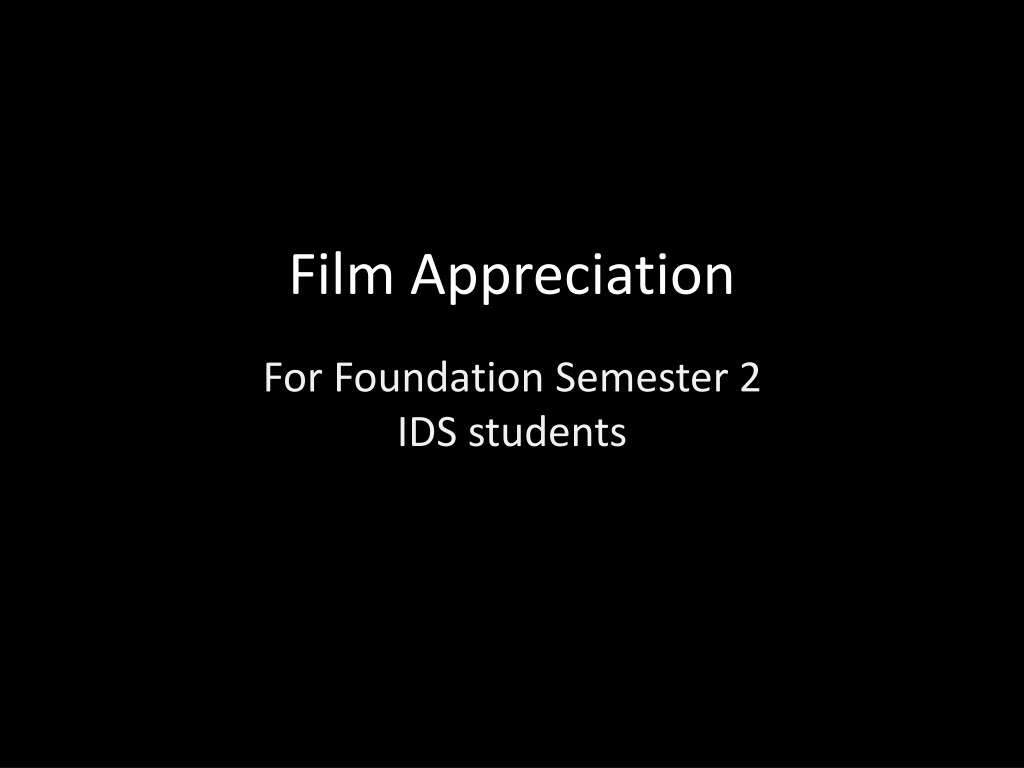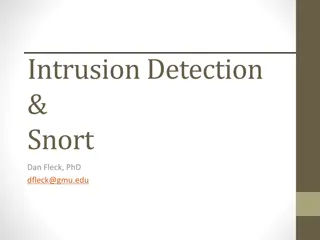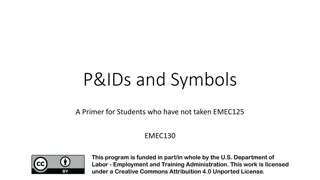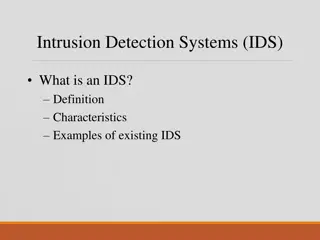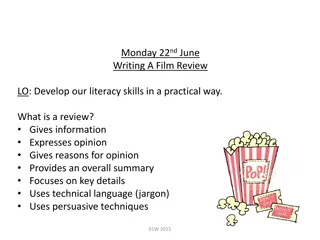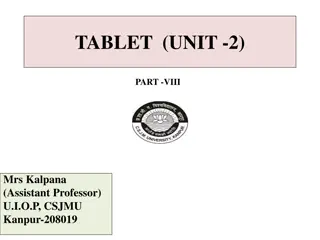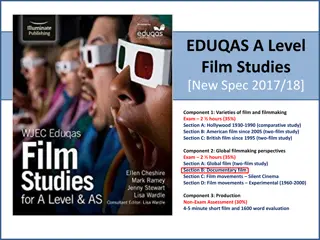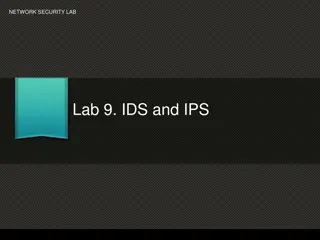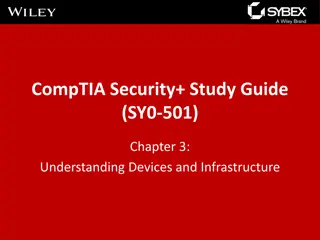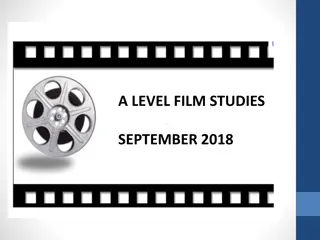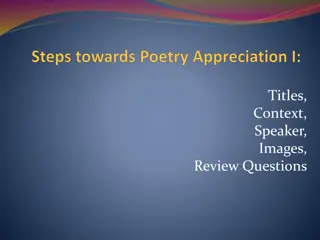Understanding the Art of Film Appreciation for Foundation Semester 2 IDS Students
Explore the history of films from the era of living photography to modern cinema, learn about different film genres, understand the elements of storytelling and film analysis, delve into camera movements, sound design, and editing techniques essential for appreciating and analyzing films.
Download Presentation

Please find below an Image/Link to download the presentation.
The content on the website is provided AS IS for your information and personal use only. It may not be sold, licensed, or shared on other websites without obtaining consent from the author. Download presentation by click this link. If you encounter any issues during the download, it is possible that the publisher has removed the file from their server.
E N D
Presentation Transcript
Film Appreciation For Foundation Semester 2 IDS students
History of Films/Cinema Since the time from living photography to theatre which entertained the masses. From setting up stages and backdrop and adding makeup with the use of static cameras. Shooting Outdoors with desired locations, with natural lights, simple tracking camera shots and realistic performance from artists/actors.
How to read a film Main Film Genres / types of films Action and Adventure Anime and Animation Children & Family Classics Comedy Documentary Drama Foreign Horror Independent Music and Musicals Romance Romantic Comedy Sci-Fi & Fantasy Thrillers
How to read a film About story Commonly used terms are : Story line/ plot Screenplay Location Casting
How to read a film From Entertainment to analysis (Ideally watching film together and having discussion and reading prospective on the film is suggested.) Commonly used terms are : Compositions (of shots and scenes) Long shot, close-up shot, rule of third (different camera positions) high angle shot, low angle shot (different camera positions)
How to read a film From Entertainment to analysis (Ideally watching film together and having discussion and reading prospective on the film is suggested.) Commonly used terms are : Camera Movements Zoom in : camera going towards the subject Zoom out : camera going away from the subject Pan shot : camera moving in horizontal of vertical directions Steady camera : still camera with no movement Shaky camera: helps to create chaos or confusion
Sound Commonly used terms are : Background Score/Music Sound Tracks Songs, Lyrics SFX (Sound Effects)
Editing Commonly used terms are : Rough lineup(shot selections) Cue Sheet Cuts, Jump cuts Fade in/ Fade outs Transitions
Other Important things: Casting Research about the subject of film Continuity Locations, Props VFX/CGI etc.
